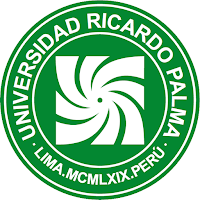The literary creation according to Lacan, knots and strings: a reflection on the sinthome
The literary creation according to Lacan, knots and strings: a reflection on the sinthome La création littéraire selon Lacan, nœuds et ficelles: une réflexion sur le sinthome
Article Sidebar
Main Article Content
Abstract
This article aims to examine Lacan’s thought on literary creation. With this aim in mind, we take as a point of reference Seminar 23, in which he deals with what Lacan calls the sinthome, a word in which he injects classical Greek into French, following the model of the Irish writer James Joyce, the object of analysis in the seminar. At the same time, some considerations are made with respect to some aspects of the sinthome that studies have interpreted in different ways, to end up proposing a new formula for this concept: sinthome 2. This comes from the fact that, at a certain point in this seminar, Lacan asserts that in the oedipal process the father is a sinthome. If this is so, it follows that literary writing as a sinthome can only be a second sinthome in relation to the first.
Article level metrics
Downloads
Metrics
Article Details

This work is licensed under a Creative Commons Attribution 4.0 International License.
La revista utiliza una licencia Creative Commons para mostrar a los lectores y a los usuarios cómo se pueden utilizar los contenidos publicados.
Los contenidos publicados en la revista están bajo una licencia CC-BY 4.0, la cual permite:
- Compartir, copiar y redistribuir el material en cualquier medio o formato.
- Adaptar, remezclar, transformar y construir a partir del material para cualquier propósito, incluso comercialmente.
Bajo los siguientes términos:
- Atribución. Usted debe dar crédito de manera adecuada, brindar un enlace a la licencia, e indicar si se han realizado cambios. Puede hacerlo en cualquier forma razonable, pero no de forma tal que sugiera que usted o su uso tienen el apoyo de la licenciante.
La información de licencia se muestra e incrusta en las páginas de artículos y en ficheros de texto completo como sigue:
«Este obra está bajo una licencia de Creative Commons Reconocimiento 4.0 Internacional».
Asensi, M. (2015). Sintaxis y modelos de mundo. Centro de Estudios sobre Comunicación Interlingüística e Intercultural de la Universitat de València.
Asensi, M. (2023). Lacan para multitudes o por qué no se puede vivir sin Lacan. Tirant lo Blanch.
Barrionuevo, J. y Barrionuevo, F. (2022). Neurosis, psicosis y psicopatología de la vida cotidiana (desde la perspectiva de la teoría nodal de Lacan). Letra Viva.
Derrida, J. (1986). De la gramatología. Siglo XXI Editores.
Ellman, R. (1991). James Joyce. Anagrama.
Freud, S. (1992). Obras completas X. Análisis de la fobia de un niño de cinco años (el pequeño Hans); A propósito de un caso de neurosis obsesiva (el Hombre de las Ratas) (1909). Amorrortu Editores.
Joyce, J. (2014 [1922]). Ulysses. Egoist Press. En Internet Archive. https://archive.org/details/ulysses00joyc_1/mode/1up
Lacan, J. (1981). El seminario de Jacques Lacan. Libro 1: Los escritos técnicos de Freud, 1953-1954. Paidós.
Lacan, J. (1999). El seminario de Jacques Lacan. Libro 5: Las formaciones del inconsciente, 1957-1958. Paidós.
Lacan, J. (2006). El seminario 23: El sinthome. Paidós.
Lacan, J. (2009a [1974-1975]). RSI [Archivo PDF]. Staferla. http://staferla.free.fr/S22/S22%20R.S.I..pdf
Lacan, J. (2009b [1975-1976]). Le sinthome [Archivo PDF]. Staferla. http://staferla.free.fr/S23/S23%20LE%20SINTHOME.pdf
Lacan, J. (2009c). De una cuestión preliminar a todo tratamiento posible de la psicosis. En Escritos II (pp. 509-557). Siglo XXI Editores.
Lacan, J. (2009d). Juventud de Gide, o la letra y el deseo. En Escritos II (pp. 703-726). Siglo XXI Editores.
Lacan, J. (2015). El seminario de Jacques Lacan. Libro 3. Las psicosis. Paidós.
Lozano, M. T. (2018). The Poincaré conjeture: a problem solved after a century of new ideas and continued work. Mètode Science Studies Journal, (8), 59-67. https://doi.org/10.7203/metode.0.9265
Morales, F. (2018). Anudarse à la Lacan. El proceso psicoanalítico soportado por enlaces y trenzas. Letra Viva.
Wiazemsky, A. (2013). Un año ajetreado. Anagrama.
Manuel Asensi Pérez, Universitat de València, Valencia, España
Contacto: manuel.asensi@uv.es










